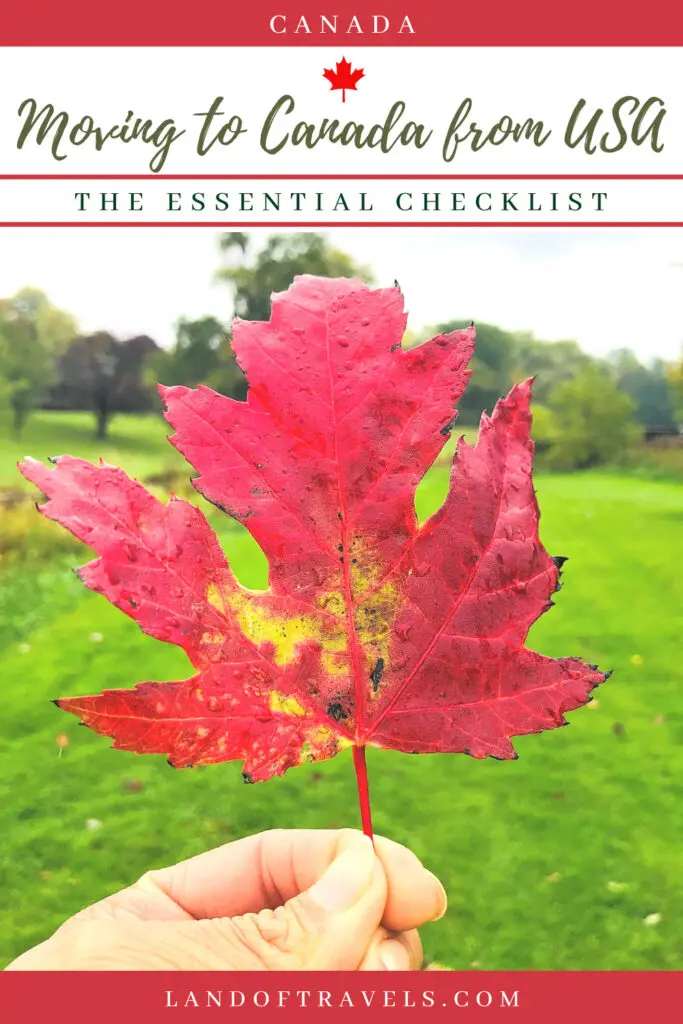 After living for 24 years in the United States, last summer we were presented with an opportunity to move to Canada. While both countries have a lot in common when it comes to language, natural beauty, landmass, outdoor activities and retail stores that make the transition easy, there are still things we wish we knew when moving to Canada from USA to avoid some of the frustrations that can crop up when moving to another country. Being equipped with up-to-date information and a moving to Canada checklist can streamline your moving plans tremendously.
After living for 24 years in the United States, last summer we were presented with an opportunity to move to Canada. While both countries have a lot in common when it comes to language, natural beauty, landmass, outdoor activities and retail stores that make the transition easy, there are still things we wish we knew when moving to Canada from USA to avoid some of the frustrations that can crop up when moving to another country. Being equipped with up-to-date information and a moving to Canada checklist can streamline your moving plans tremendously.
This post is an effort to share a checklist that focuses on things you need to do before your move to Canada as well as the documents you will need to apply for after you enter Canada. Even though our experience is based on moving to Canada from USA, we believe our checklist will be helpful to anyone migrating to Canada from any part of the world.
Contents
Moving to Canada from USA: Things you need to do before you move
There are several things that you need to do before you move to Canada that can ensure a smoother transition and avoid unnecessary hassles. Having the following documents beforehand helped us tremendously with many of the subsequent paperwork that we needed to complete post-arrival in Canada.
1. Immigration documents and approval
Needless to say, having the proper immigration documents and approval is a must before you plan your move. This post is not a guide on how to apply for immigration to Canada and assumes that you have completed all the application requirements for your permit and/or immigration status and have the necessary approval. We do recommend that you consult the official Canadian immigration website for all the current requirements in this regard.

2. Organizing your finances prior to moving to Canada from USA
Another important step to take care of before you leave your country is establishing how you will manage your finances at home and in Canada, including setting up your Canadian bank account.
i. Setting up your Canadian bank account
Establishing a Canadian bank account before you depart your country is quite beneficial. Major banking institutions in Canada offer a variety of banking services, including the ‘Newcomer to Canada’ plan. These institutions include Royal Bank of Canada (RBC), The Bank of Montreal, Canadian Imperial Bank of Commerce (CIBC), The Bank of Nova Scotia, and TD Canada Trust. They all offer a ‘Newcomers to Canada’ account which has some great perks that we found helpful.
With some of these major banks, you can start the application online to set up an account, transfer funds, and apply for the credit card to have it all ready for you before you arrive in Canada. You can also show this bank account statement as proof of funds to the immigration officer, if asked, upon arrival.
ii. Keeping a record of your stock portfolio balance summary
If you have your stock portfolio, it is advisable to keep a print out of your portfolio summary page showing the current value the day before you entered Canada. This will be helpful for filing your tax returns later on.
iii. Change of address for important correspondences
Before moving to Canada from USA, one thing people might overlook is changing your address for important mails. For a smoother transition, it is often helpful to choose the paperless billing option with email and/or setting up SMS alerts for important bills so that you can pay them promptly even after you have moved to Canada.
iv. Notifying credit card companies regarding upcoming travel
Having credit cards with no foreign transaction fee can come in handy, especially during the initial months following your move. Also, remember to notify your credit card company that you will be in Canada so that their security and fraud detection system does not decline your credit transactions in Canada.

3. Rental home search
If you are planning to initially rent a home in Canada before you decide to buy one, then we suggest starting your search as soon as you know your arrival date in Canada. We did not wait till we entered Canada to start looking for a rental property and interacting with the rental agency. Depending upon which city you are planning to move to, finding an affordable rental place could be challenging. Therefore, being proactive in your search could help and may provide you more options. In our experience, we found that Rentals.ca and Kijiji.ca (Real Estate => Rental section) were a great resource to look for long or short-term home and apartment rentals. However, we found that Kijiji was more up to date on what is available and what is already rented.
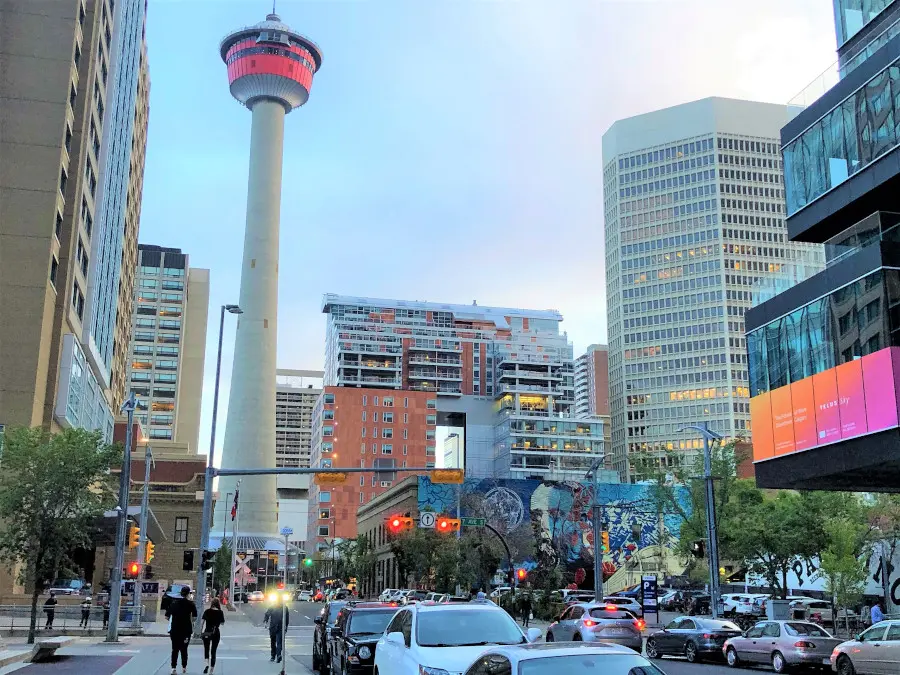
4. Starting school admissions process before moving to Canada from USA
If you have school going kids, your immigration plan should certainly include planning the school admission process in Canada beforehand. It is important to bring with you the official transcripts from your child’s previous school for submitting to their school in Canada.
Canadian schooling system (K-12), just like the US, has public and private schools. Schools fall under a specific school district that oversees school policies, admission processes, and other administrative tasks. Your home address will determine which public school you can send your kids to. On the other hand, private schools do not have any address restrictions so you can send your children to any private school in the city that is accepting new students.
We started the correspondence with the school district office as soon as we had signed our home rental lease agreement. A rental agreement or any other proof of address is required to start the school admission process. Our high school-going children were required to complete an online assessment for English and Mathematics conducted by the public school district as part of the admissions process. The school district counselors were very helpful and guided us through the entire process. Following the assessment, they also conducted an online video interview with our children to discuss their results and assign courses based on our children’s aptitude and interests. The entire process took around three weeks.

5. Packing your prescription medications when moving to Canada from USA
If you take any prescribed medications regularly, then ensure that your moving to Canada checklist includes bring with you at most a 90 days’ supply along with the doctor’s prescription note. It is also important to keep all medicines in the original container with the label that clearly lists the details of the medication.
6. Driving record and history
If you have driven in your country, bringing your official driving record from the automotive authority in your country should be a part of your moving to Canada checklist. The record should clearly state the number of years you have been driving for, the date your license was originally issued, and any misdemeanors like DUI or driving accidents. Canadian Ministry of Transportation may consider your past driving history in your country and issue the license class accordingly.
What we learned through our experience was that the vehicle insurance companies will query the Ministry of Transportation to obtain your driving experience in order to determine your vehicle insurance rate.
In our case, since we were moving from California, USA, we needed to fill out the INF1125 form which can be downloaded from California DMV’s website. We chose to send the form by postal mail to the DMV Sacramento office along with a cheque for the processing fee. Usually, it takes DMV anywhere from 15 to 20 business days to provide this record. Plan accordingly and give yourself enough time to get this necessary document before you leave the country.
Keep in mind that DMV offers an unofficial and printable version of your driving record on their website however, the Canadian Ministry of Transportation may not accept this unofficial driving record.
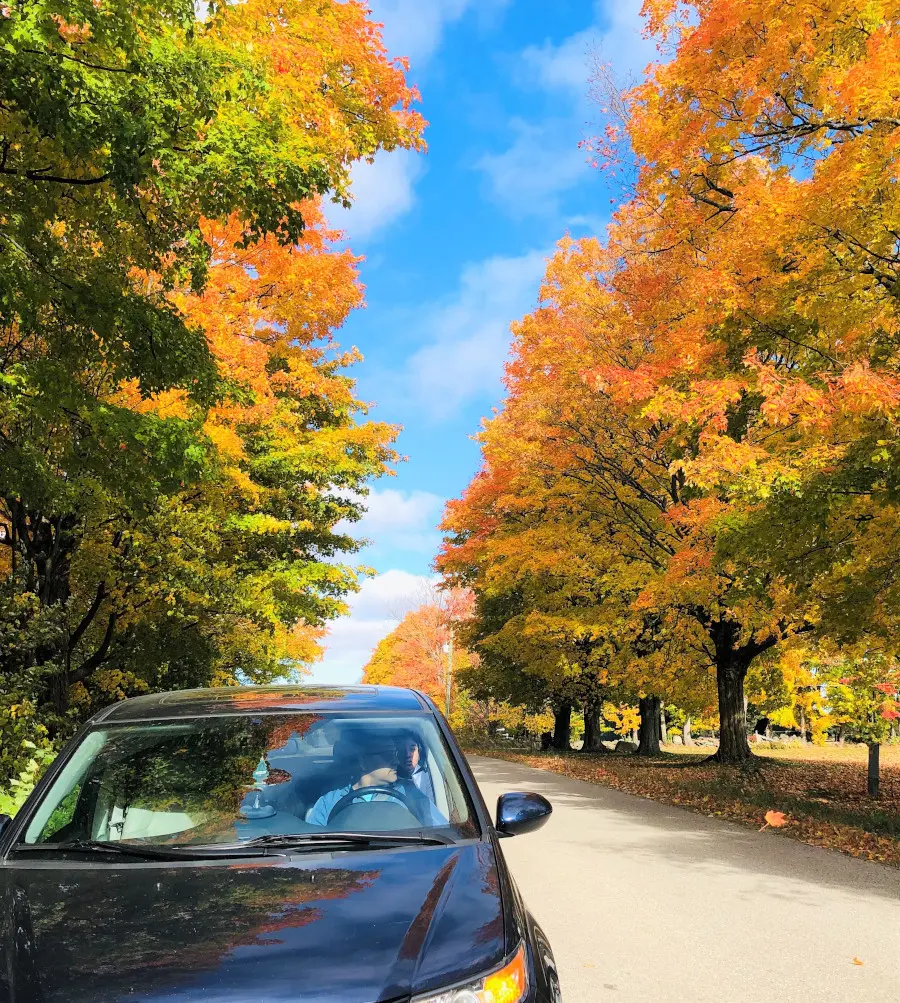
7. Vehicle Paperwork
While this may not apply to everyone, there are many people moving to Canada from USA who prefer to bring their vehicles with them. In our case, we chose to bring our vehicle with us during our cross-country road trip to Canada.
The process of importing your US vehicle is very convenient and does not cost much when it comes to registering it in Canada. You can get the vehicle paperwork done at the US-Canada border crossing. However please keep in mind that you should have proper documentation showing that you fully own the vehicle as the process can get complicated if it is a leased vehicle or there are still pending payments on it. Please refer to the Canadian Border Security Agency (CBSA) website for the latest requirements for bringing your vehicle over.
8. Cell phone plans
Even though cell phone plans are getting cheaper in Canada, they are still very expensive when compared to plans in the US. Our US cell phone plan included unlimited calling, text, and data to and from Canada at a cheaper rate. For this reason, we continued to use our US cell phone plan even after moving to Canada from USA. The only drawback we noticed was that there were some Canadian region-specific apps that weren’t available for download in our US-based app store. However, you can always use the website of such Canadian companies to access the available content.
If you would rather go with the Canadian phone plan, there are a variety of pre-paid and monthly post-paid plans to choose from. Cell phone service providers in Canada include Bell, Telus, Shaw, BCE as well as regional and subsidiary providers you can go with. Initially, it might be a good idea to opt for a pre-paid phone plan from the subsidiaries. Once you figure out your cell phone usage, you can always upgrade your provider and/or your plan accordingly.

9. Other important paperwork that you should include in your moving to Canada checklist
Besides your passport and your Canadian visa, in addition to the paperwork mentioned above, it is always a good idea to bring the following original documents with you when moving to Canada from USA:
– Marriage certificate
– Birth certificates of children
– Tax return statements from the previous year
– Letter of Experience from your vehicle insurance company or companies (if you have more than one in past 10 years) stating the insurance period and any insurance claims till date (including claim date, driver name, and was it at fault)
– Document proving your highest level of educational qualification
– Vaccination records for children
– Vaccination records for pet
– School transcripts and graduation certificates for your children
– Include a summary of your medical history from your medical provider as part of the documents in your moving to Canada checklist
View this post on Instagram
Moving to Canada from USA: Things you need to do after you move
Once you are in Canada, your moving to Canada checklist should include filing a series of paperwork and completing various processes so that you can start your new life in Canada on the right foot.
1. Applying for Social Insurance Number (SIN) Card
The first order of business after moving to Canada from USA is to apply for the Social Insurance Number (SIN) card. If you are wondering what the SIN card is, then think of it as something similar to the Social Security Number (SSN) in USA. The SIN card is needed to work in Canada and to receive benefits and services from the government programs. Kids above the age of 12 can apply for their SIN card as well.
You can apply for the SIN card online or go to the nearest Service Canada office location to apply for it in person. We found that it was quicker to go in-person and get the SIN number issued right away rather than apply for it online and then wait for a few weeks to receive it in the mail. The application form is straightforward and as long as you have the required original documents, the process should be quick. There is no fee to apply for the SIN card.
It is important to know that you should not share your SIN information with anyone else other than your financial institute or your prospective employer (if asked). So, keep your SIN number and card somewhere safe. Got your SIN card? Congratulations! You got your first Canadian official document, other than your visa.
2. Moving to Canada checklist – applying for your provincial health card
Canada is widely regarded for its universal, publicly funded health-care system. After moving to Canada from USA, the next important thing you need to do is to apply for the Health Card issued by the province.
It is a misconception that you are automatically enrolled in the Canadian health system as soon as you arrive. Just like the Social Insurance Number (SIN) card you can apply for the province-specific Health Card at any Service Canada location or your province Service office location. It can take up to 90 days to receive the Health Card in the mail after you apply for it in-person.
During the time you are waiting for the arrival of your health card, it might be beneficial to look into buying the traveler’s health insurance as a stopgap. Keep in mind that if you choose to buy the traveler’s health insurance, you are eligible for it only if you apply within the first week of your arrival in Canada.

3. Finding a physician/family doctor and walk-in clinics
Finding a physician or a family doctor who is accepting new patients can be challenging. There is a list of doctors along with their brief expertise, contact numbers, and office address available via the provincial Service office website. For example, in Ontario, you can look up the list of doctors in the region here.
To find out whether the doctors listed for your region are accepting new patients or not, you will likely have to call them individually. Once you find a doctor of your choice who is accepting new patients, you will have to register with the physician’s office following which you can book an appointment.
Alternatively, you can always go to walk-in clinics in the city for any medical care needs. Some people don’t go through the hassle of looking for a family doctor or a personal physician and just use the walk-in clinics as and when they need it. Walk-in clinics are a great option even if you have signed up for a family physician as they are probably open for longer hours and available in many locations on a drop-in basis. You can even get your prescriptions filled at these walk-in clinics.
4. Establishing your Canadian Bank account – the ‘Newcomers to Canada’ plan
If you haven’t opened a Canadian bank account before moving to Canada from USA, you should consider looking into available options as soon as you arrive. All the major banks offer ‘Newcomers to Canada’ Savings and Chequing (or Checking) accounts. In our opinion, this is a great option for the start of your financial life in Canada.
Each bank offers different perks with this plan such as no monthly fees for 12 months. Yes, paying a monthly bank fee did come as a shock to us as the US banks do not charge their customers any fee for maintaining Savings and Checking accounts. Other perks may include a comparatively higher starting credit card limit, a free small locker for a year, and a limited number of no-fee monthly international money transfers. Make sure to shop around online to see which bank is offering the best deal before you sign up for the ‘Newcomers to Canada’ plan with any particular bank.
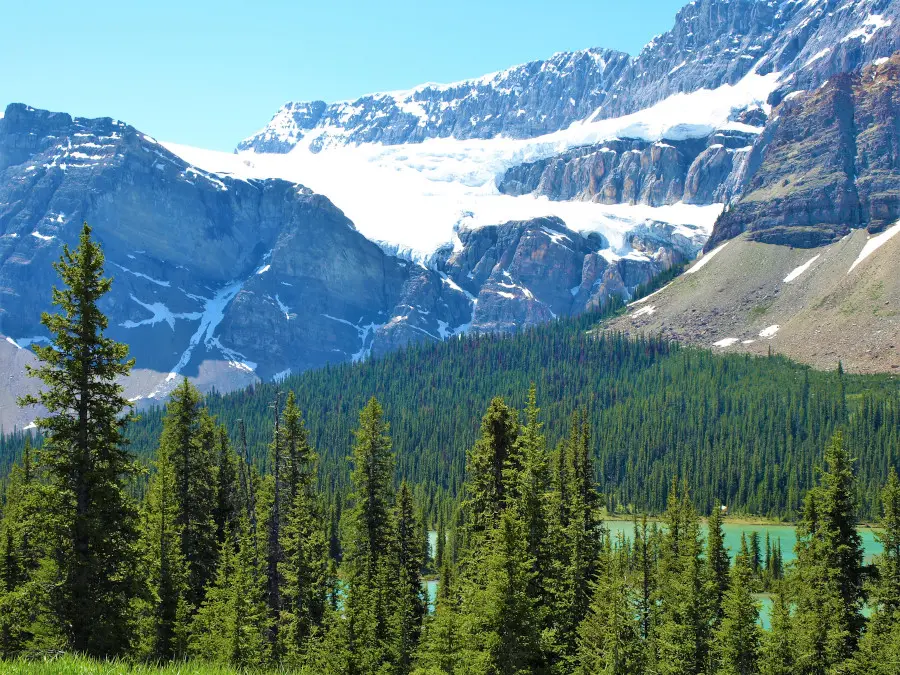
5. Building your Credit Score after moving to Canada from USA
You will get your first credit card issued from the bank when you open the Savings and/or Chequing account. This will be the start of building your credit history in Canada. It is vital to build a good credit score and maintain it as it shows the creditors that you are financially responsible and are a reliable person. In short, the better the credit score, the better the interest rate offered for any loans that you take will be.
Keep in mind that your US credit history will not get transferred to Canada. To our surprise, our US credit history and scores did not get transferred over even though, here in Canada, they use the same credit reporting agencies – TransUnion, Equifax, and Experian. So, everyone is in the same boat when starting their financial credit history after moving to Canada, no matter which country you are coming from.
As newcomers to Canada, the two biggest factors that we found helpful in building a good credit score were:
– Ensuring that you pay your bills on time – every time!
– Not charging more than 25% of your credit limit on your credit card
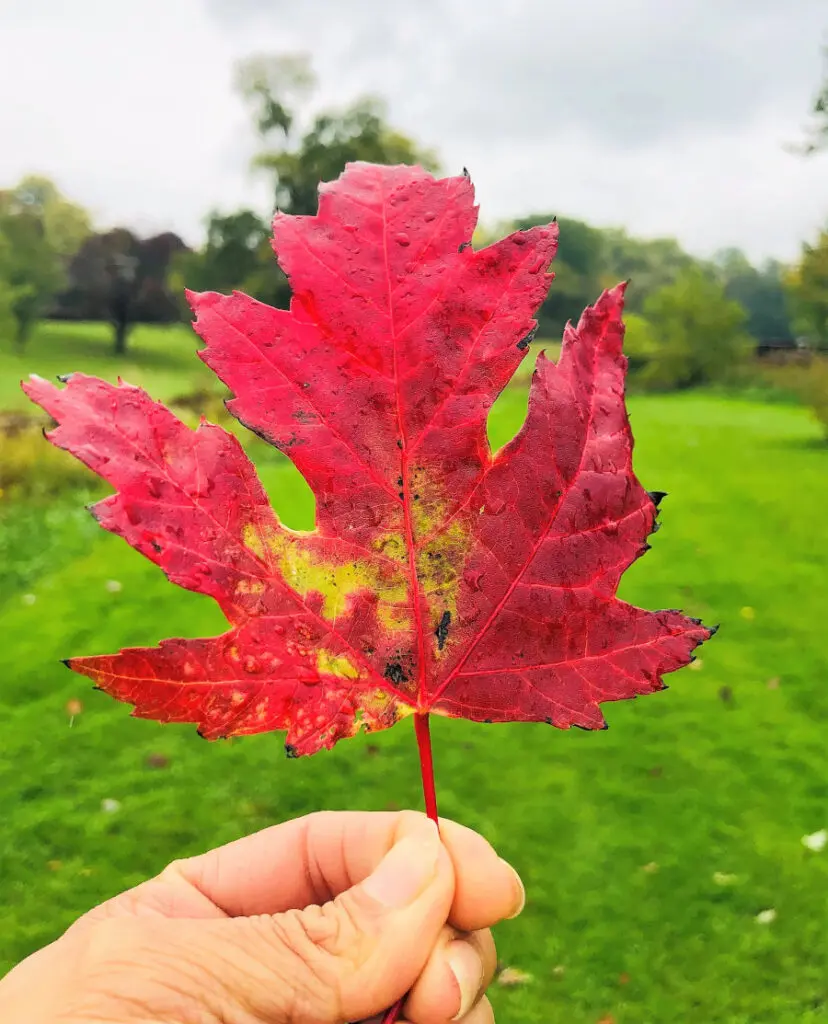
6. Obtaining your provincial Driver License
If you are planning to drive in Canada, you need to get a Canadian (provincial) driving license. With this province-issued driving license, you can drive anywhere in Canada. If you already have a valid driver’s license from your previous country of residence, note that it is only valid in Canada for a few days upon arrival and that it is required by law to get the Canadian Provincial Driving license within 90 days following your arrival.
Now if you had been driving in another country before you arrived in Canada, bringing your official driver’s record with you, as mentioned earlier in this post, can be beneficial. The Canadian Ministry of Transportation may consider your driving experience and issue you an experienced class driving license without the written or behind the wheels driving test if you have the complete, official driving record.
Types of Driving licenses in Canada
Here in Ontario province where we currently reside, for any work pertaining to driving (other than vehicle insurance) you would need to go to the Driving Centre location. To avoid long lines, it is better to be there at least 20 minutes before they open. Some locations do open on Saturdays and it is best to call them and check the office hours in advance. To learn more about how to obtain a driver’s license in Ontario, click here.
The License classes vary from province to province. For example, in Ontario, we have a class ‘G’ license type to drive any car, van, or small trucks. Class ‘G’ contains ‘G1’ (level 1 graduating license), the next higher experience level being ‘G2’ and then after few years of driving experience, you will get your full class ‘G’ license. In our case, once we showed our official California driving record history, we were issued the full class ‘G’ license in exchange for our California driving license without any written or driving test.
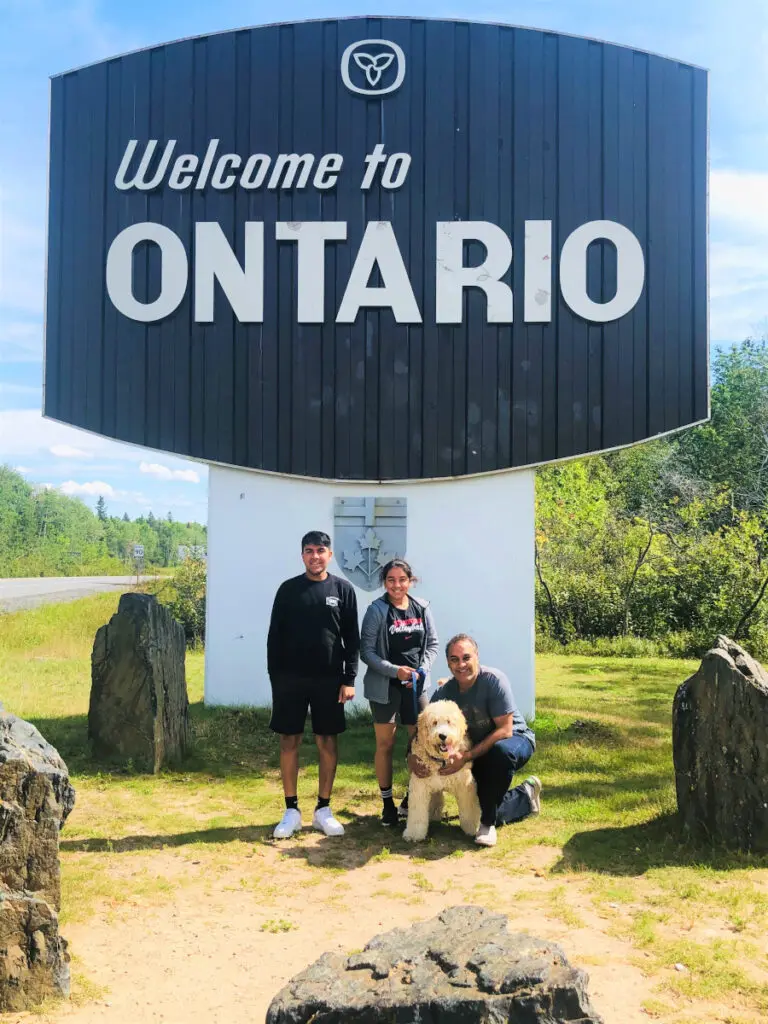
7. Vehicle insurance Plans
Once you have your Canadian provincial driving license, your next step would likely be purchasing or leasing a vehicle before you shop around for insurance options. Since we brought our car with us when we were moving to Canada from USA, we were able to immediately start looking for the best vehicle insurance options available to us.
If you have your full class license issued in your province based on your prior driving experience in another country and you have your letter of experience from your previous vehicle insurance companies, you might end up getting offered a much better insurance rate. The vehicle insurance companies will consider your driving history and how clean it has been in the past into the quote. We were able to bring down our rates by 50% from what we were quoted online by ensuring that we had all the necessary documentation with us when shopping around for insurance plans.
Even though several of the major vehicle insurance companies offer an online quote wizard, in our experience it was much more beneficial to talk to the agent over the phone and get the quote directly from them and have any questions answered before making a final decision.
8. Registering your vehicle after moving to Canada from USA
You can conveniently register your vehicle at any of the Service Canada locations near you. Service centers tend to get crowded very quickly. It is better to be there at least 20 minutes before they open so you can be among the first ones to be served.
The car registration form process is straight forward and short. Along with the registration form, you are required to show a Canadian issued picture ID or your passport, vehicle’s paperwork stating that you are the owner of the vehicle, proof of address, and proof of vehicle insurance. In our case since we were importing our car from the US, we also needed to submit additional customs and duty clearance forms that typically get issued at the border crossing or at a CBSA office at the airport.
Once all the paperwork is complete, you will be issued the provincial vehicle license plates and the registration card to keep in your vehicle as proof of registration.
9. First-year filing of tax returns
Depending on which month you arrived in Canada, you may have an interesting first-year tax filing experience. Canadian Revenue Agency (CRA) will look at the tax terms between both countries to determine your tax obligations and whether Canada has a tax treaty with the country you moved from to avoid double taxation. We highly recommend considering having your first-year taxes done by the professional tax services CPA who understands the tax filing system in both countries as part of your moving to Canada checklist so that it is done right.
View this post on Instagram
We sincerely hope that our checklist for moving to Canada from USA helps you prepare and start your life in Canada on the right note. The 10 provinces and 3 territories of Canada that span from Pacific to Atlantic and northwards to the Arctic Ocean welcome people from all over the world with open arms. Peace-loving Canada has a rich history, friendly people, eclectic mix of cuisines and cultures and it is truly a 21st-century melting pot. It is our duty as immigrants to melt into Canada’s culture and contribute to building a better future for the generations ahead. We are sure that you will cherish every moment along this journey and become a part of everything Canada has to offer.
Disclaimer: It’s a pleasure for us to share our travel experiences and this moving to Canada checklist with all our readers and we sincerely hope to inspire your future travels. In order to help us maintain this blog and offset the costs of running landoftravels.com, we have sprinkled affiliate links throughout the site. If you choose to make a purchase via any of these affiliate links, we’ll earn a tiny commission at no additional cost to you.
If you enjoyed reading this post, don’t forget to share!
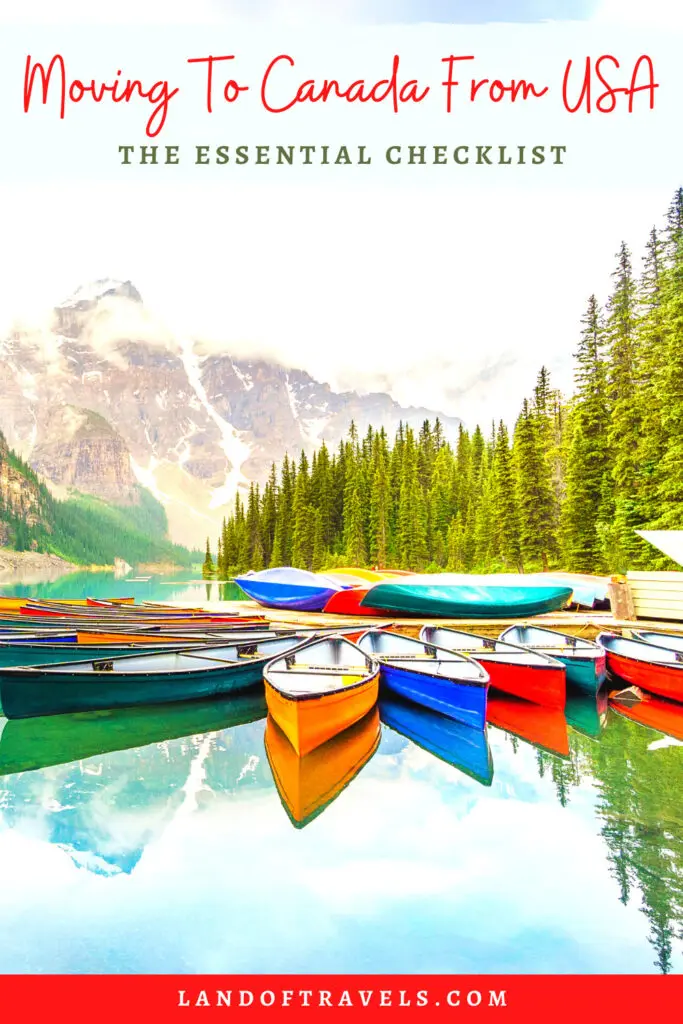

Hello ! I’m Manish …..
Welcome to Land Of Travels – a travel blog that my wife Aditi and I started to share our travel stories and travel tips. We are full-time professionals, dedicated parents, foodies, and it is our shared passion for traveling that lead us to become part-time bloggers.
I was born and brought up in Northern India, lived in Bay Area, California for nearly two decades, and currently reside in Ontario, Canada. Since childhood, I’ve always had a passion to travel far & wide and experience different cultures. I am passionate about planning our trips and exploring off-the-beaten-path destinations.
My sincere hope is that the travel tips offered on this blog will help you plan your next memorable adventure.
Happy travels!
~ Manish Sharma ~

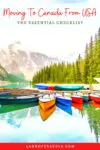
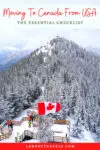










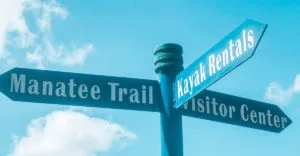




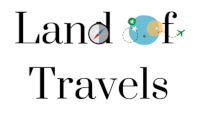
Great post, I recently moved from NY to British Columbia and find this post spot on. One thing to keep in mind is that each province is slightly different and has their own set of rules and regulations. In BC for example they have public auto insurance (which sucks imo) and everyone is required to buy basic car insurance from the ICBC and then you can purchase additional options through private insurers.
Another thing to note when it comes to cell phone plans is, at some point your U.S. provider is going to notice you’re no longer in the U.S. and may force you to switch or buy an international plan. This happened to a friend of mine who studied in the U.S. and moved back home to Canada when he graduated.
Agreed! Every province is different. The ICBC in the BC province is an interesting model as they are the driver license issuer authority as well as auto issuer.
As for the US cellphone plans, I don’t think they are enforcing it but to your point they may at some point. It’s great to see that the cellphone plans in Canada are getting competitive and affordable in last couple of years. So, porting your US number to google voice or some similar service and having a Canadian number may be an option as well.
Wow , Thank you and ,its very very useful the way you put all the moving steps prior and after. Im also planning to Move from California to Ontario in mid of 2023.
This was such an interesting and detailed read. I really enjoyed it!
This is definitely on my bucket list. Such a lovely post; beautiful photos and lots of useful information. Thanks for sharing
I love how detailed this post is! It will be really helpful for someone moving to Canada.
This is such a helpful post! I moved abroad from the US and I had to do so much of the same stuff you did.
Well, First.. I have loved following your new Canadian adventures! You have the most beautiful family. 2nd, WOW did you get out of the US in time, right?!
Moving to any country is so much more work than packing boxes, sounds like you have it down to a ‘consultant’ level science!
I’m glad your safe and settling in, Love to the family and keep the adventure sharing, I enjoy seeing you all exploring together.
Moving is so stressful let alone to another country! It takes a lot of research before deciding to move. This detailed post shows you did just that! Canada is such a great place to live and raise a family, congratulations to you and your family.
This is such an interesting read, especially since I’ve moved from the US to Mexico and Vietnam as a temporary resident. It seems like the process for Canada involves a few more steps than what I did, but I think my employers may have done some of the paperwork for me. I would honestly love to live in Canada because there are so many interesting destinations there that I’d be closer to, but I do think getting used to the colder weather would be an adjustment to say the least!
These are some great tips! I have to admit, I have always been jealous of just how cheap the phone plans are in the United States based on my conversations with American friends. We are seeing the Canadian companies making shifts towards lower-cost plans with more data available, however, they are still significantly overpriced in comparison.
What a great checklist! I never would have imagined some of these things. I especially like your cellphone tip. Most people would have automatically changed to a Canadian carrier.
This is a great guide for moving from the US to Canada. I have never lived abroad, so for a first timer this is a great guide! I love Canada and would definitely consider moving there at some point in the future, if for nothing more than the health insurance. Of course the beautiful scenery is another reason! I have pinned and will keep this in mind for the future!
What a comprehensive list! This would be very helpful for people who would not know anyone in Canada who can guide them with the move process. I am glad I have a daughter who lives there and is a citizen!
This is a really informative post. I’ve only visited both countries as a visitor so it was interesting to know all about the other procedures. I hope you’re happy and settled now in Canada.
This article is definitely handy for all those people who are planning to move to Canada. The points are very well highlighted like informing the credit card company so that the transactions are not declined. I found many of the tips handy. Nicely written article.
Wow – moving to Canada is a lot of work! This is such a great checklist.
one of the most practical , Informative& detailed information in your blog. Can be really helpful for anyone moving to Canada with family & taking care of minutest details
Oooh Aditi I had no idea that you had moved to Canada! Congratulations on the move and I hope you are loving it here as much as we do. <3
Most of these points were very similar for us when we moved to Canada from the UK. I wish I had this blog before we got here!
p.s. I hope this means you can visit the West!
Thanks Josy. Yes, we love it here in Canada. We will surely be heading over to British Columbia every now and then once travel returns to normal.
Very helpful post. Will keep in mind if we ever consider moving to Canada!
I don’t plan on moving any time soon, but this post contains AMAZING information. I know it’s Canada specifically, but I think a lot of these are helpful for foreign countries in general!
This is super helpful! My mom just applied for her Canadian citizenship, so I’m hoping in the future I’ll be able to get mine as well. It’s so helpful to see your list of all the documents I’ll need to move!
Wow, talk about timing. Probably the best time to move to Canada. Great tip about setting a bank account before the move. Didn’t realize this was possible. Bummer that cell service is more expensive.
I moved from the US to the UK and I know how difficult this process can be. Your list is fabulous for those looking to make the move Canada. Thanks for sharing.
Great tips on what needs to be done when moving from the US or any country to Canada. Kind of stresses me out to think of all the work you had to do. Seems like a month of non-stop stuff to deal with, especially with the driving issues like paperwork, getting a new license, car insurance and such.
I am glad your cell phone plan worked in Canada. I have heard horrible things of a few friends who live in Ontario who prefer American cell plans if they can get the service to connect.
So the only thing I was wondering about was all the financial stuff you did. Don’t get me wrong, am down with setting up proper documentation for taxes. But with online banking systems these days like Ally that work internationally with no exchange fees or atm fees, why waste your time setting up a low interest, brick and mortar, banking system in Canada. I can’t imagine they offer you great rates. Just seems like you are losing money.
Thank you – glad you found the post informative. Moving to any country certainly requires a lot of planning and is time-consuming. And you are right, if you prefer online-only banking then that is also a good option.
Moving is always tedious and challenging, and more so if you are moving country. You have listed out an exhaustive checklist that is sure to be of tremendous use for those moving from the USA to Canada, they will benefit from your experience.
Thanks for sharing these detailed tips. It’s very helpful to know all this information, specially the details regarding vehicle paperwork and newcomers plan. Saving this for future reference.
Congratulations for the successful move. This is a very well thought out checklist – easy to follow detailed tips. One thing I have read in the past is that many booster seats for small kids that are sold in the US are not approved for Canada. So, if you have small kids, you may need to buy new ones.
Thank you. That’s a good tip regarding the car seats – our kids are past that age so we didn’t have to think about it 🙂